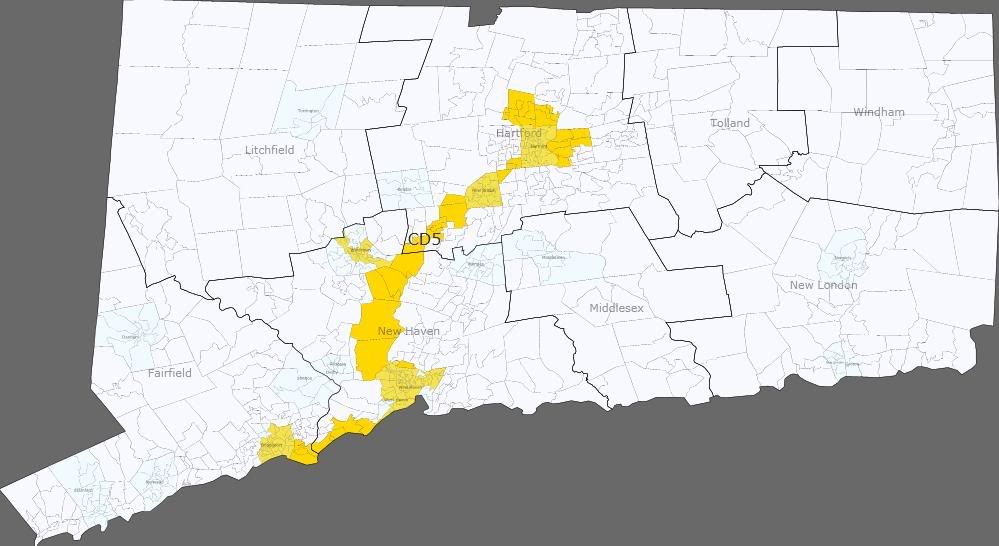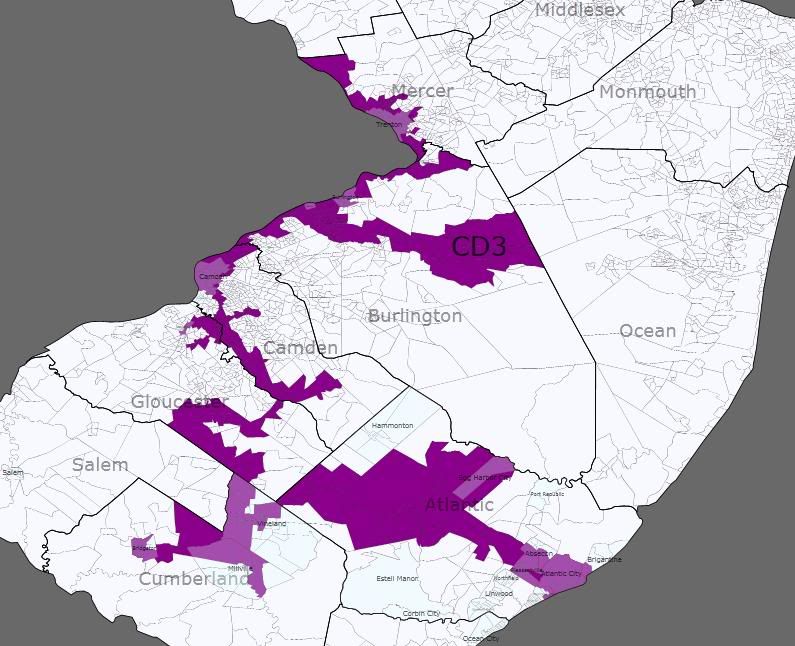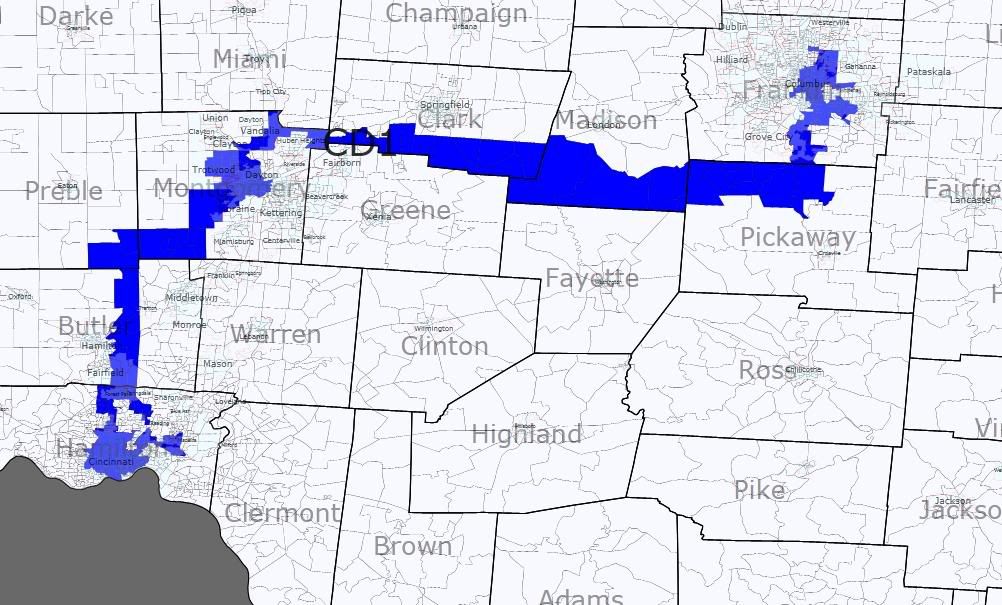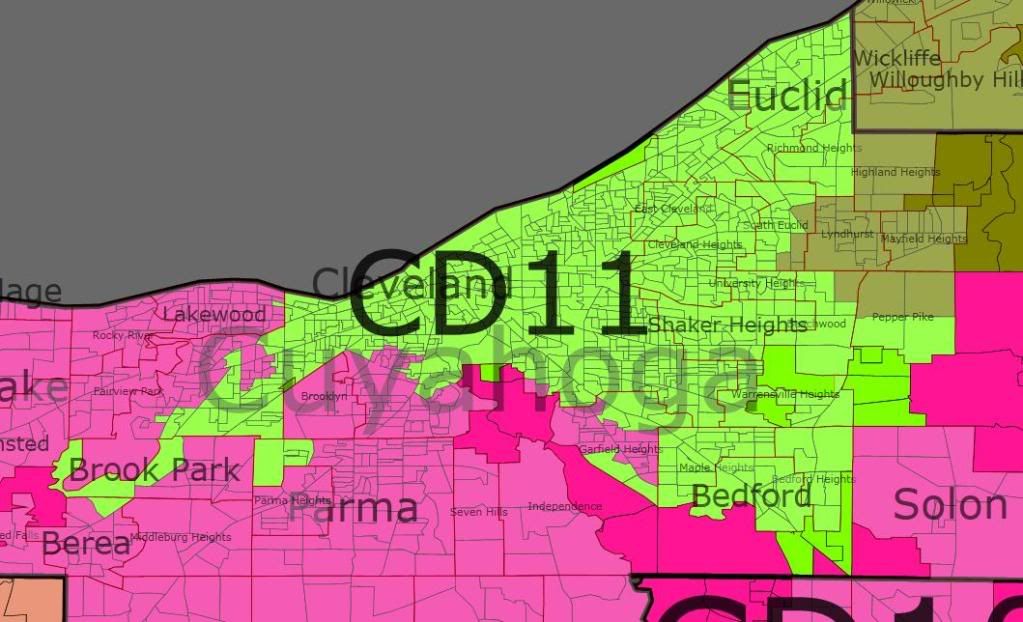Democrats currently hold 12 of Illinois’s 19 congressional districts. In 2010, 8 Democratic seats (IL-01 – Rush; IL-02 – Jackson; IL-03 – Lipinski; IL-04 – Gutierrez; IL-05 – Quigley; IL-07 – Davis, IL-09 – Schakowsky, and IL-12 – Costello) and 5 Republican seats (IL-06 – Roskam; IL-15 – Johnson; IL-16 – Manzullo; IL-18 – Schock; and IL-19 – Shimkus) appear to be safe. Of the 6 potentially competitive races, I predict the Democrats take one seat (IL-10 – OPEN (Kirk)).
DISTRICT 08 – MELISSA BEAN – DEMOCRAT
PVI: R+1
RATING: VERY LIKELY DEMOCRATIC HOLD
The eighth district covers the wealthy Northern Chicago suburbs of Cook, Lake, and McHenry counties.
Democrat Melissa Bean is the sitting Congresswoman. She was a successful sales executive with Fortune 500 companies as clients. She hit the political map in 2002, when she lost to incumbent Phil Crane by only 15% in spite of a lack of party support. She did not have that problem in 2004, when she beat Crane by 4%. She defended the seat by 7% against David McSweeney in 2006, and by 20% against Steve Greenberg in 2008.
Republican Joe Walsh is a businessman and conservative activist. His is a former teacher and social worker. He won a crowded primary by nearly 10%. He is considered the first “Tea Party” candidate to win a contested primary for a major office. It was recently reported that Walsh’s home is being foreclosed.
As of January 13, 2010, Bean had $785,000 on hand, and Walsh had $7,000.
I hesitate to diminish Walsh. He obviously received traction in the primary, and raised over $100,000. However, Bean is pretty flush, and has done a good job of establishing herself in this blueing district. I would be surprised if Bean wins by less than 10%.
DISTRICT 10 – OPEN (MARK KIRK) – REPUBLICAN
PVI: D+6
RATING: TOSS-UP/TILT DEMOCRATIC PICKUP
The tenth district takes in the wealthy Northern Suburbs of Chicago. It is historically Republican. A Democrat has represented it for only four of the last 100+ years (Abner Mikva 1975-1979).
Democrat Dan Seals is a marketing executive. He is African-American. He ran two strong races against Mark Kirk in 2006 and 2008, losing by 6% both times. Kirk had easily won his 2002 and 2004 contests. Seals defeated State Representative Julie Hamos by less than one percent in the primary.
Republican Bob Dold(!) is a pest control company owner. He served as an investigative counsel for the House Government Reform and Oversight Committee, and worked for former Vice President Dan Quayle. Dold won his primary by 7% over State Representative Beth Coulson.
As of January 13, 2010, Seals had $146,000 on hand, while Dold had $198,000.
Both candidates will do well with fundraising. Seals seems like a much better ideological fit for this rapidly blueing district. I see Seals’s 2006 and 2008 races against Kirk as a sign of his strength in the district, as Kirk had trounced his prior opponents. Others seem to disagree. If the climate is right, Dold could keep this one in GOP hands, but I give Seals the edge.
DISTRICT 11 – DEBBIE HALVORSON – DEMOCRAT
PVI: R+1
RATING: LIKELY DEMOCRATIC HOLD
The eleventh takes in a strip from the Southern Chicago suburbs nearly all the way across the state, and dips into Bloomington. Democrats had represented the district from 1959 to 1995, when Jerry Weller swept in during the 1994 wave and stayed for 15 years before retiring in 2009.
Democrat Debbie Halvorson is the sitting Congresswoman. Her base is in the Southern exurbs of Chicago. She began as a Mary Kay cosmetics saleswoman. Starting in 1997, she served 12 years in the Illinois Senate, including the last four as majority leader. She defeated Marty Ozinga by 24% to win this seat in 2008.
Republican Adam Kinzinger was a member of the McLean County Board from 1998 to 2003. McLean County includes Bloomington, and is in the Southern part of the district. Kinzinger is a former National Guard pilot who served in Afghanistan and Iraq. He was named Wisconsin Red Cross “Hero of the Year” for an incident wherein he wrestled a knife-wielding assailant to the ground who had just cut a woman’s throat in downtown Milwaukee. He easily won his primary.
As of January 13, 2010, Halvorson had $952,000 on hand, while Kinzinger had $196,000.
Kinzinger seems like a compelling candidate, but Halvorson will be extremely difficult to beat, particularly with nearly a million dollars in the bank. Halvorson has a reputation as an energetic campaigner – the anti-Martha Coakley. Her demolition of Marty Ozinga speaks volumes. When Halvorson defeated incumbent Aldo DeAngelis for the State Senate seat she held for 12 years, DeAngelis’s campaign manager quipped: “Aldo knew all the bank presidents, but Debbie knew all the tellers.” I would say Halvorson holds on by low double digits, maybe high single digits.
DISTRICT 13 – JUDY BIGGERT – REPUBLICAN
PVI: R+1
RATING: VERY LIKELY REPUBLICAN HOLD
The thirteenth district covers the Southwestern suburbs of Chicago, extending into DuPage and Will counties. It is the wealthiest district in Illinois. It has been represented by a Republican for over 100 years.
Republican Judy Biggert is the sitting Congresswoman. An attorney by trade, she served in the Illinois House from 1993-1999. She was elected in 1998, and was easily re-elected until 2008, when her current opponent Scott Harper held her to a 10% victory.
Democrat Scott Harper is the founder of a successful media, design, and marketing company.
As of January 13, 2010, Biggert had $638,000 on hand, while Harper had $99,000.
Harper is a serious candidate, but there is no reason to believe that he will improve on his 10% loss in 2008 in what will probably be a Republican year.
DISTRICT 14 – BILL FOSTER – DEMOCRAT
PVI: R+1
RATING: LEAN DEMOCRATIC HOLD
The fourteenth district extends from the Western Chicago suburbs nearly all the way across the state. Prior to 2008, it had been represented by Republicans for nearly 70 years.
Democrat Bill Foster is the sitting Congressman. His base is in the Western Chicago exurbs. He is an award-winning research physicist and co-founder of a successful theater lighting company. He won a 2008 special election for the seat over Jim Oberweis by 6%, and then won the general election over Oberweis by 16%.
Republican Randy Hultgren is a State Senator representing the Western Chicago exurbs. An attorney by trade, he was elected to the State Senate in 2006. He defeated Ethan Hastert, the son of former House Speaker Dennis Hasters, in the primary by 10%.
As of January 13, 2010, Foster had $1 million on hand, while Hultgren had $10,000.
Hultgren should be taken seriously as a candidate. He has a base in the less conservative Eastern part of the district, and his defeat of Hastert was no small feat. However, he spent nearly all of his money on the primary and is far behind in fundraising. I expect Foster to win by high single digits here.
DISTRICT 17 – PHIL HARE – DEMOCRAT
PVI: D+3
RATING: VERY LIKELY DEMOCRATIC HOLD
The seventeenth district is a gerrymandered district concentrated along the Mississippi River in West Central Illinois, but jutting out into Springfield and Decatur. It is heavily white and heavily blue collar. Democrat Lane Evans held the seat from 1983 to 2007. Prior to that, it had been represented by Republicans since 1918, with the exception of a single, one-term Democrat.
Democrat Phil Hare is the sitting Congressman. He is from Rock Island in the Northern part of the district. He was a union leader before becoming an aide to Representative Evans. Evans retired prior to the 2006 election, and Hare defeated Andrea Zinger by 14% to take the seat. He was unopposed in 2008.
Republican Bobby Schilling owns a restaurant in East Moline, in the Northern part of the district. He touts his background as a union Treasurer at Prudential Insurance. He is a movement conservative supported by the Tea Party.
As of January 13, 2010, Hare had $716,000 on hand, while Schilling had $45,000.
In a November 22, 2009 local media poll had Hare’s re-elect at 40% re-elect, 47% against.
This race has a chance to be competitive. This is the type of hardscrabble, blue collar district where Democrats may struggle in 2010. That said, Hare has a 16 to 1 cash on hand advantage, and Schilling appears to be very conservative. I expect Hare to win by about 15%.








